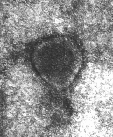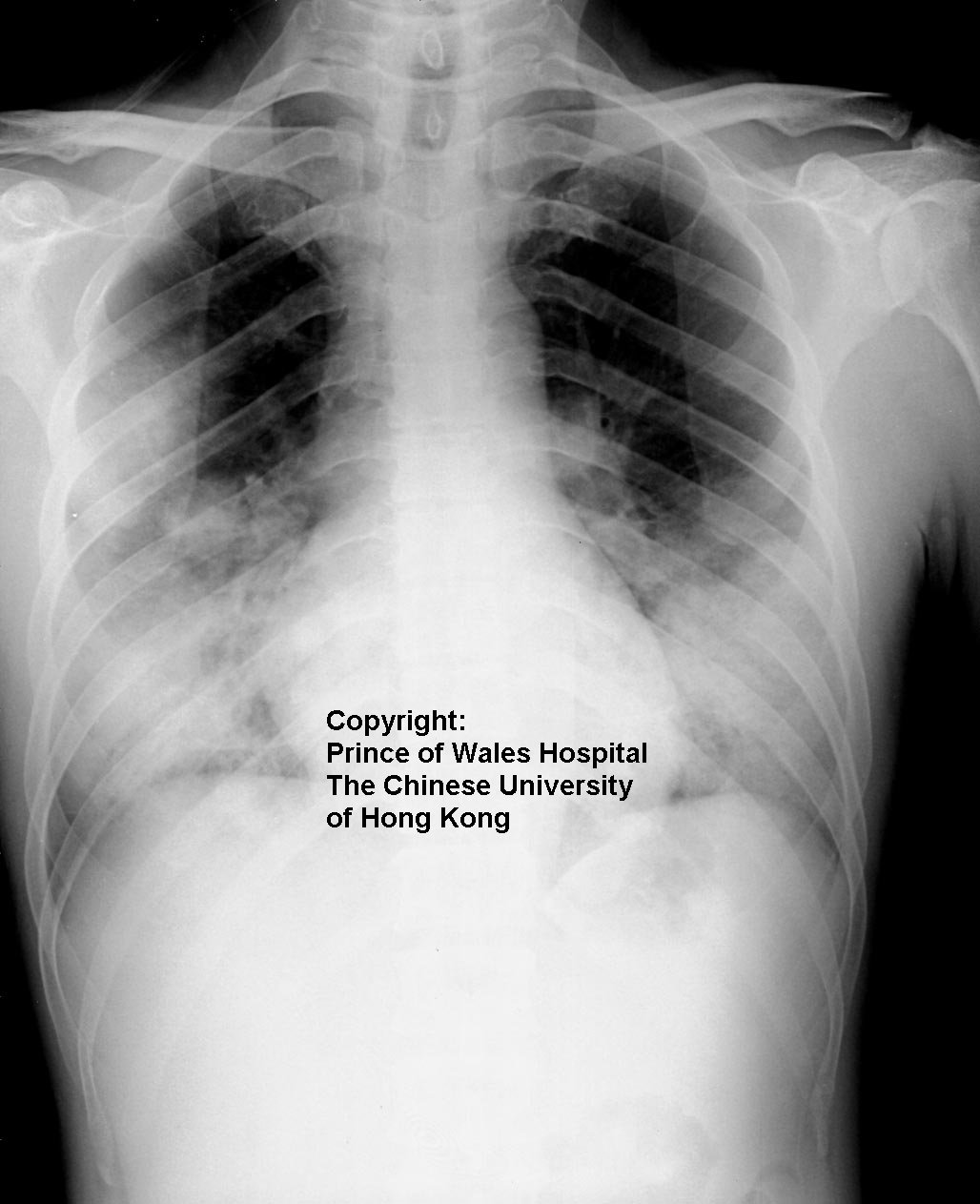SARS (Severe
Acute Respiratory Syndrome)
The number of the prevalence
and deaths has settled down gradually in the world and even in
Beijing in China. And WHO announced "The SARS epidemic has
been stamped outin July 5.", but next prevalence in winter
should be cautious.
The
SARS, Severe Acute Respiratory Syndrome which is spread from HongKong,
GuangDong and Hanoi Vietnam is reporting recently. Many countries
have been taking measures to meet this serious situation, and
Japanese Government finally started to take measures to cope with
SARS according to the reports from WHO
(Cumulative Number of Reported Probable SARS cases) and CDC. But they
are just putting up posters at the airport and stations etc, and
urging people not to go these endemic areas. In spite of various
measures of many countries especially in Asia, the number of both
the infected people and the deaths has been increasing every day.
Recently Chinese Government revised the number of the infection
including death after the criticism that China may have lied the
number of the infection.
Five cases including suspected
cases was reported in Japanin 2003, but 3 of these cases were
excluded by examination and following by April 22 (they were bronchitis),
but all cases were not SARS cases. Japanese Government does not
announce the detail, but it is important to show detail information
to people from epidemiological point of view and disease prevention.
Japanese Government (Ministry of Health, Labour and Welfare) may
think it the best way to hide complex information to protect or
control ignorant people from a disaster, and it is almost same
as the policy to the AIDS problem in Japan (Japanese Government
and some doctors hid the possibility about the AIDS infection
through the blood products and they permitted the company to use
them).
1. The outline of SARS
In Japan, Ebola haemorrhagic fever, Lassa fever
and the plague etc are classified to the class 1 infectious disease
by Japanese law for the infectious diseases, and SARS has been
classified to the class 1 infectious disease, too.  The
CDC, Atlanta Georgia USA, expressed that new SARS virus, which
belongs to the coronavirus group, is the cause of SARS being prevalent
in Asian countries. The size of coronavirus is 80-150 nm and it
has the process like solar corona on its surface, so it is called
coronavirus. The coronavirus is widely seen in the natural world
and it causes common cold and respiratory diseases to human beings
and animals. One third of the cause of general common cold is
this coronavirus. (photo: an electron microscope image)
The
CDC, Atlanta Georgia USA, expressed that new SARS virus, which
belongs to the coronavirus group, is the cause of SARS being prevalent
in Asian countries. The size of coronavirus is 80-150 nm and it
has the process like solar corona on its surface, so it is called
coronavirus. The coronavirus is widely seen in the natural world
and it causes common cold and respiratory diseases to human beings
and animals. One third of the cause of general common cold is
this coronavirus. (photo: an electron microscope image)
2. Symptoms
The first symptom of SARS virus infection is fever
of 38℃ and a patient shows the symptoms similar to the influenza
such as headache, general maliase and muscle pain etc. The patient
will complain of cough (dry cough rather than wet cough) and dyspnea
within 2 -7 days. The incubation period is 7 - 10 days, so we
should be cautious for at least a week after the contact to an
infected person. The aged people and the infants have to pay much
attention not to contact the SARS patients and not to go to the
area where SARS is prevalent, and it is same as the influenza
infection. Generally, no finding is recognized in Chest X-ray
 film at the beginning, and soon
(within 2 - 7 days) the consolidation in the chest X-ray film
is seen by rapid progress. By CT (Computed Tomography), uniform
consolidation like ground-glass appearance is seen, but this finding
is not specific to SARS.
film at the beginning, and soon
(within 2 - 7 days) the consolidation in the chest X-ray film
is seen by rapid progress. By CT (Computed Tomography), uniform
consolidation like ground-glass appearance is seen, but this finding
is not specific to SARS.
Image : Chest X-ray film from Prince of
Wales Hospital in HongKong ( http://www.droid.cuhk.edu.hk/
)
The coronavirus is known as a cause of common
cold, and it sometimes causes acute enteritis. In Japan, the outbreak
of acute enteritis by coronavirus were recognized in Mie Prefecture
in Feb 1997 - May 1998. The symptoms were abdominal pain, fever
and severe watery diarrhea, and no severe symptom of nausea and
vomiting then.
3. The route of Infection
The droplet infection by
cough and snezing of an infected person nearby like influenza
is thought to be the main route of infection. On the other hand,
contagion through door knobs, stationeries and public transportation
etc is strongly suspected as an important route of infection (similar
to other viral infection such as Rota and Adenovirus etc). By
some reports, there is a tendency that persons who had been working
near the patients (family and nursing staff etc) and who had no
precautionary measures such as masks have been infected.
4. Therapy
There
is no effective drug nor measure yet. Therefore, you should take
precautionary measures such as taking a mask and washing hands
etc, and of course the best way is not to go to the prevalent
area. Recently, there is an information though it is uncertain
that a kind of medicine used for treatment to hepatitis-C with
the interferon(IFN) injection may be effective, because it is
an antiviral agent. But it is not approved yet in Japan.
5. Cumulative Number of Reported Probable
SARS Cases
WHO shows
up-to-date cumulative
number of reported probable SARS cases with various information
in web site. Please check them.
6. Report in Japan (National Institute of
Infectious Diseases)
Forty cases were
suspected but 39 cases were already denied by the national committee
in April 21 and another case is now improving. There were 16 probale
cases in April 19 but 14 cases were already excluded by the committee,
and other 2 cases have been improving now. But there is no definite
evidence to neglect these 2 cases from SARS, so they are now under
observation. There is no certain SARS case in Japan at the present,
and WHO showed 1 probable case in June 25. But no case is shown
in WHO web site about cumulative
number of reported probable SARS cases now.
This is my personal opinion but we cannot trust Japanese government
because they often betrayed people. Japanese bureaucrats always
think everything not for people but for themselveseven about the
national policy.
Top of the information

 The
CDC, Atlanta Georgia USA, expressed that new SARS virus, which
belongs to the coronavirus group, is the cause of SARS being prevalent
in Asian countries. The size of coronavirus is 80-150 nm and it
has the process like solar corona on its surface, so it is called
coronavirus. The coronavirus is widely seen in the natural world
and it causes common cold and respiratory diseases to human beings
and animals. One third of the cause of general common cold is
this coronavirus. (photo: an electron microscope image)
The
CDC, Atlanta Georgia USA, expressed that new SARS virus, which
belongs to the coronavirus group, is the cause of SARS being prevalent
in Asian countries. The size of coronavirus is 80-150 nm and it
has the process like solar corona on its surface, so it is called
coronavirus. The coronavirus is widely seen in the natural world
and it causes common cold and respiratory diseases to human beings
and animals. One third of the cause of general common cold is
this coronavirus. (photo: an electron microscope image) film at the beginning, and soon
(within 2 - 7 days) the consolidation in the chest X-ray film
is seen by rapid progress. By CT (Computed Tomography), uniform
consolidation like ground-glass appearance is seen, but this finding
is not specific to SARS.
film at the beginning, and soon
(within 2 - 7 days) the consolidation in the chest X-ray film
is seen by rapid progress. By CT (Computed Tomography), uniform
consolidation like ground-glass appearance is seen, but this finding
is not specific to SARS.